Kimber is best known for their domestically-produced line of 1911-pattern semi-automatic pistols. So it came as a bit of a surprise around this time last year when they announced that their next concealed carry handgun was going to be… a revolver. It’s not easy to make a decent, double action revolver. People think of revolvers as being simple to operate, but mechanically, they are incredibly complex machines. So, for Kimber to come out of the blue and announce that they’re making a defensive revolver that will compete with established models from Smith & Wesson and Ruger comes across as a bit audacious, to say the least. But, that’s not necessarily a bad thing.
The new Kimber K6s .357 Magnum snub nose was released last year, but availability has been limited so far. It sounds like Kimber plans to start ramping up production soon, so you should be able to find one at your friendly local gun store in the near future. I was able to get my hands on a K6s a couple of months ago and I’ve put nearly 1000 rounds through it so far. The video review below offers a good overview of my impressions thus far, but if all goes as planned, I should have some follow-up reviews coming within the next couple of months.
There was a ton of stuff I wanted to squeeze into this video, but I try to keep the reviews under 8 minutes, so not everything would fit. As usual, I’ve provided a transcript of the video below embed, but if you keep scrolling, you’ll find some additional details that didn’t make the final cut.
Video Review: Kimber K6s .357 Magnum
Video Transcript:
About a year ago, Kimber announced that they would be producing a .357 magnum 2-inch barreled snub nose revolver called the K6s. This is a first for Kimber, who is mostly known for their 1911s, but the K6s now has them competing with other small, steel frame revolvers like the Ruger SP101, the Smith & Wesson J-frames, and, as of last week, the new Colt Cobra. These revolvers are all roughly the same size and weight, and when you look at variants with comparable features, they are fairly close in price as well. The most notable difference is that the Kimber and the Colt have a 6-round capacity while the more established Ruger and Smith and Wesson only hold 5 shots.
The K6s has an internal hammer, making it a double action only design. Not everyone is going to love the absence of an exposed hammer that can be cocked for single action, but I consider it a huge asset in a carry revolver to help ensure a snag-free draw stroke.
The hammerless design is complemented by a frame that has been completely dehorned so there are no sharp edges or corners to catch on clothing. The sights are also low-profile, but unlike most small revolvers, they are replaceable. The front sight is held in place by a pin in the top of the barrel, and the dovetail rear sight is drift adjustable for windage. Both sights come with a black serrated face, but I’ve painted the front sight to improve visibility. The checkered cylinder release latch is activated by pressing inward, similar to a double action Ruger. The chambers are recessed so that the cartridges sit flush with the top of the cylinder.
Kimber quietly started shipping the K6s sometime in the middle of 2016 but in very small numbers. So far, it’s been tough to find one for sale, and price tags often far exceed the $900 suggested retail price. Kimber offered to loan us one to review but said they would have to get caught up with production first. We didn’t know how long that would take, so we just decided to track one down ourselves and pay full retail. So, over the last couple of months, I’ve had a chance to put a few hundred rounds through this gun. That’s really just the beginning of the testing we have planned for the K6s, but I’ve had enough time with it so far to form a few first impressions.
The trigger is really the stand-out feature. It’s a very smooth, 10-pound double action pull with no stacking. I’m not exaggerating when I say that it’s easily the best factory trigger I’ve used on a small-frame revolver. Kimber put a lot of their engineering effort into making sure the trigger was usable out of the box, and that seems to have paid off. It’s still going to be a challenge for anyone who’s not already comfortable with double actions, but it’s a major improvement over the competition.
I really appreciate that they used sights that can be adjusted and replaced, but I’m not a fan of the default black on black sights. Even with some bright paint on the front sight, they’re still fairly short and not the easiest to use. Fortunately, Kimber has announced four new models coming out that have different sight options like a fiber optic front sight, a set of taller 3-dot sights, tritium night sights, and Crimson Trace LaserGrips. Hopefully, these sights will soon be made available as standalone options for those of us who want to upgrade the original sights.
The rubber grip that comes with the Kimber is a decent size and shape that is concealable but also functional. But I’m kind of particular about revolver grips, and this one is not ideal for my hands. The ability to change grips to suit the user is usually one of the major advantages of revolvers, but again, there’s nothing else available for the Kimber yet. I’d like to see some Hogue Tamer grips like the ones made for the Ruger LCR that cover the backstrap and add some girth to the grip.
The lack of aftermarket support is really the biggest problem with the K6s right now, and that’s to be expected with a gun that’s barely in production. So for now, the holster I’ve been using is an SP101 appendix holster that… kinda, mostly fits the Kimber. I’ve got some Colt Detective Special speed loaders from 5 Star Firearms that are actually the same as the K6s-branded loaders that Kimber sells on their website. But realistically, if I were to carry extra ammo with this revolver, it would be on a speed strip. Kimber includes a 6-shot speed strip with the K6s, but I prefer a larger 7 or 8 shot strip so I can space the rounds out for easier loading.
Recoil is what you’d expect with a small steel frame revolver. It’s far easier on the shooter than an alloy or polymer framed snubby, but more difficult to manage than a mid-size revolver like a Smith & Wesson K-Frame. The K6s is chambered for .357 magnum, and unlike the Airweight revolvers, shooting magnums doesn’t feel like it’s going to shatter your hand. But it’s still not exactly pleasant, and I wouldn’t recommend actually carrying the gun with magnum ammo anyway. When you go to a 2-inch barrel, .357 loses a lot of velocity and effectiveness but delivers excessive recoil. Follow-up shots are going to be slow, and for most people, accuracy will suffer too. A small, steel frame revolver like this is perfect for .38 +P defensive ammo.
I fired several 5 round groups from a bench rest at 25 yards to test the accuracy of the K6s. Most of the loads I tested gave me groups between 3 and 5 inches, which isn’t bad at all for a snub nose. From the factory, the K6s was shooting about 3 inches to the left at 10 yards, so I had to make some windage adjustments. I know very few manufacturers sight in their guns at the factory, but the rear sight was visibly off-center, so that’s a little disappointing.
And that leads me to a question I know a lot of people are wondering about the K6s. Even if Kimber has designed a good revolver, can they mass-produce a good revolver? It is well-known among discerning 1911 shooters that Kimber’s quality control is… not awesome. Stuff like misaligned sights might not seem like a big deal, but it’s not encouraging in light of Kimber’s reputation.
And unfortunately, that’s not the only issue I’ve noticed. There’s this little ridge here around the cylinder release. If you look closely, there’s some excess jagged metal there. On the right side, it’s a clean line all the way around but on the left side, someone clearly forgot a step at the factory and nobody managed to catch the mistake before the gun went out the door. It’s a small thing and it’s just cosmetic, but it’s that kind of sloppiness that I find troubling.
I’m really trying not to judge Kimber too harshly. I like the K6s and mechanically, this one has not had any problems at all. But this is just a sample size of one. As Kimber starts ramping up production on these things, I’m going to be paying a lot of attention to what other K6s owners have to say about their experiences. I’m also going to keep shooting this one, and I’ll try it with new grips and sights whenever the aftermarket catches up so I can get back to you guys with an update.
End transcript.
The Steel Frame Snubby
The steel frame snub nose occupies an interesting niche among modern concealable handguns. Most small revolvers made today are not steel — lightweight aluminum alloy and polymer frames are far more popular. A snub nose that weighs under a pound can easily be carried on an ankle or in a pocket. They are great as backup guns or for those times when you can’t wear a belt with a proper holster.
If you can carry on a belt, these lightweight revolvers are far less than ideal. They’re convenient but really difficult to shoot. If you carry a heavier gun like the 23 ounce all-steel K6s, you’ll barely notice the increased weight in a belt holster compared to trying to carry it in your pocket, and you’re a lot more likely to practice with the heavier gun and actually hit what you’re aiming at. But using that same logic, if you’re going to carry on your belt, it might make more sense to just carry a compact double stack semi-auto, or even step up to a medium frame revolver. That’s one of the reasons why the small, steel frame snub nose isn’t more popular. However, a lot of people find that they strike that ideal balance between concealability and shootability.
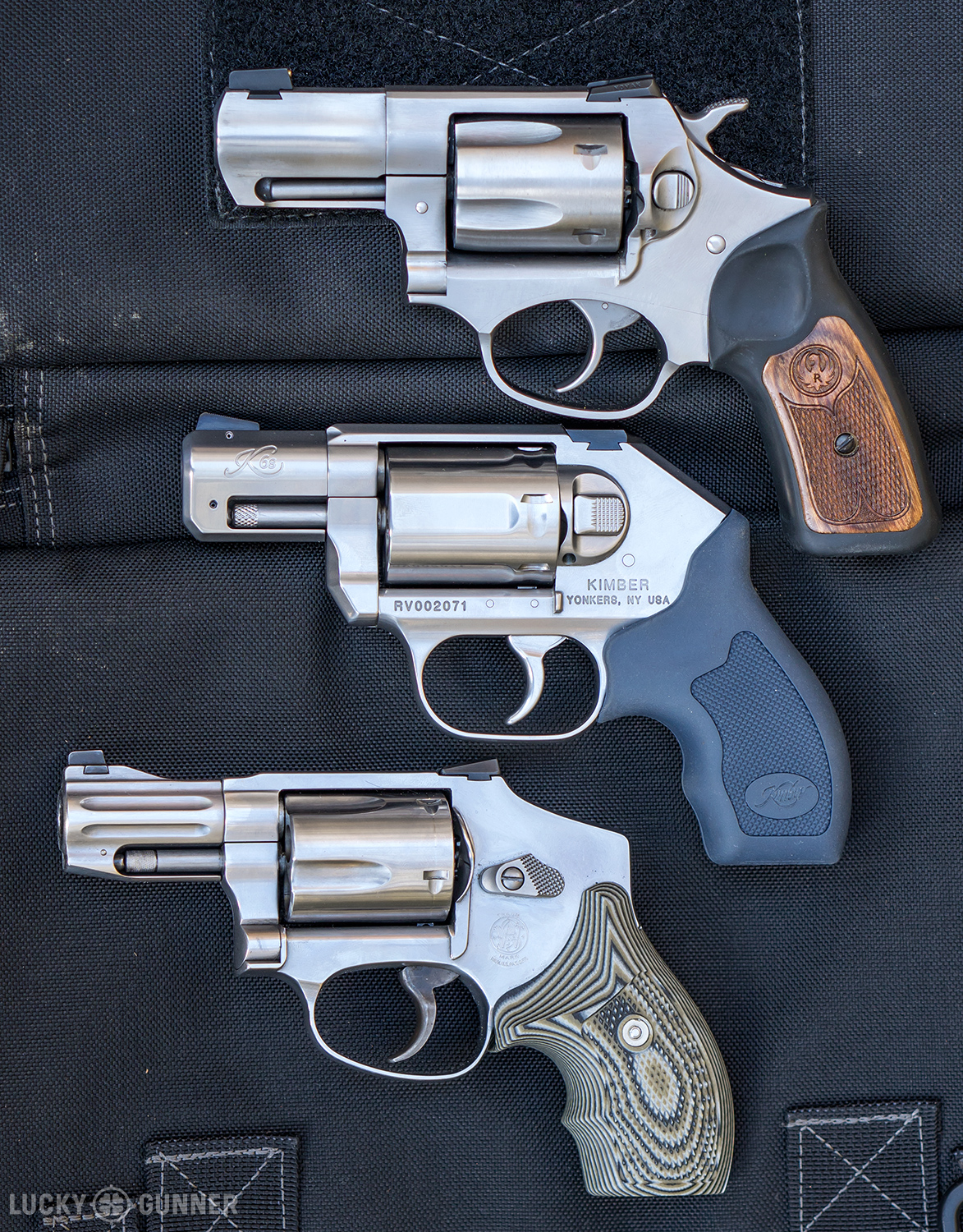
So, the Kimber K6s joins this category with the Ruger SP101 and the steel Smith & Wesson J-frames, like the excellent Model 640 Pro. The Kimber has 20% greater ammo capacity than those two, and it’s easily smaller than the SP101 and only larger than the J-frame by an insignificant margin. In terms of dimensions and capacity, it’s actually more like a modern successor to the Colt Detective Special.
For several decades, Colt made the only small-frame .38 special six-shot revolvers. The Detective Special was the original steel frame version, and for a while, they also made lightweight aluminum variants like the Cobra and the Agent. When Colt stopped making revolvers in the mid-90s, they left a big gap in the market and no one has stepped up to fill that gap, until now. After talking to some of the guys at Kimber who are involved with the project, that’s exactly what they wanted to do — their goal was to make a Colt Detective Special for the 21st Century.
However, they are not the only ones who have had this idea. Just last week, Colt announced that they are finally reviving their double action revolvers, starting with a new Colt Cobra. The Cobra name is actually a little misleading here — this will be a steel framed gun, not aluminum like the original Cobra. The new Colt Cobra is actually an updated Detective Special with a fiber optic front sight. Whether it’s deserved or not, Colt has a huge head start with this new product thanks to brand name recognition alone. The pressure is really on for Kimber to prove that their new revolver can hang with the competition.
Steel Snub Nose Comparison
| model | Kimber K6s | Smith & Wesson 640 Pro | Ruger SP101 Wiley Clapp | Colt Cobra |
|---|---|---|---|---|
| capacity | 6 | 5 | 5 | 6 |
| caliber | .357 mag | .357 mag | .357 mag | .38 spl +P |
| weight | 23 oz | 22.1 oz | 25 oz | 25 oz |
| barrel length | 2″ | 2.13″ | 2.25″ | 2″ |
| overall length | 6.62″ | 6.63″ | 7″ | 7.2″ |
| height | 4.46″ | 5.1″ | 4.5″ | 4.9″ |
| width | 1.39″ | 1.25″ | 1.35″ | 1.4″ |
| front sight | serrated black (removable) | white outline tritium insert (removable) | black with brass bead (removable) | Fiber optic (removable) |
| rear sight | serrated black (removable) | white outline tritium insert (removable) | Novak style black (removable) | fixed trench style |
| action | DAO (shrouded hammer) | DAO (shrouded hammer) | double action w/ hammer spur | double action w/ hammer spur |
| MSRP | $899 | $839 | $839 | $699 |
Inside the Kimber K6s
I’m not going to pretend that I have an advanced understanding of the internal mechanics of revolvers, but I’m also not afraid to pop off a sideplate and start poking around just out of curiosity. That’s one of the first things I did with the K6s. The disassembly procedure was familiar, and very Smith-like. Three screws hold the side plate on, and the forward-most screw also retains the cylinder and crane. Kimber conveniently used hex-head screws for the sideplate so no obscure gunsmith-specific drivers were needed for the job.
The S&W similarities did not end with the sideplate. Like I said, I’m no expert on revolver guts, but the inside of the K6s sure looked familiar. In fact, viewed side by side with a S&W J-frame, the K6s looks like a direct descendant. The most pronounced differences seem to be with the shape of the hammer and the position of the hammer spring and strut. This could account for why the K6s has a significantly lighter and smoother-feeling trigger pull than the J-frame.
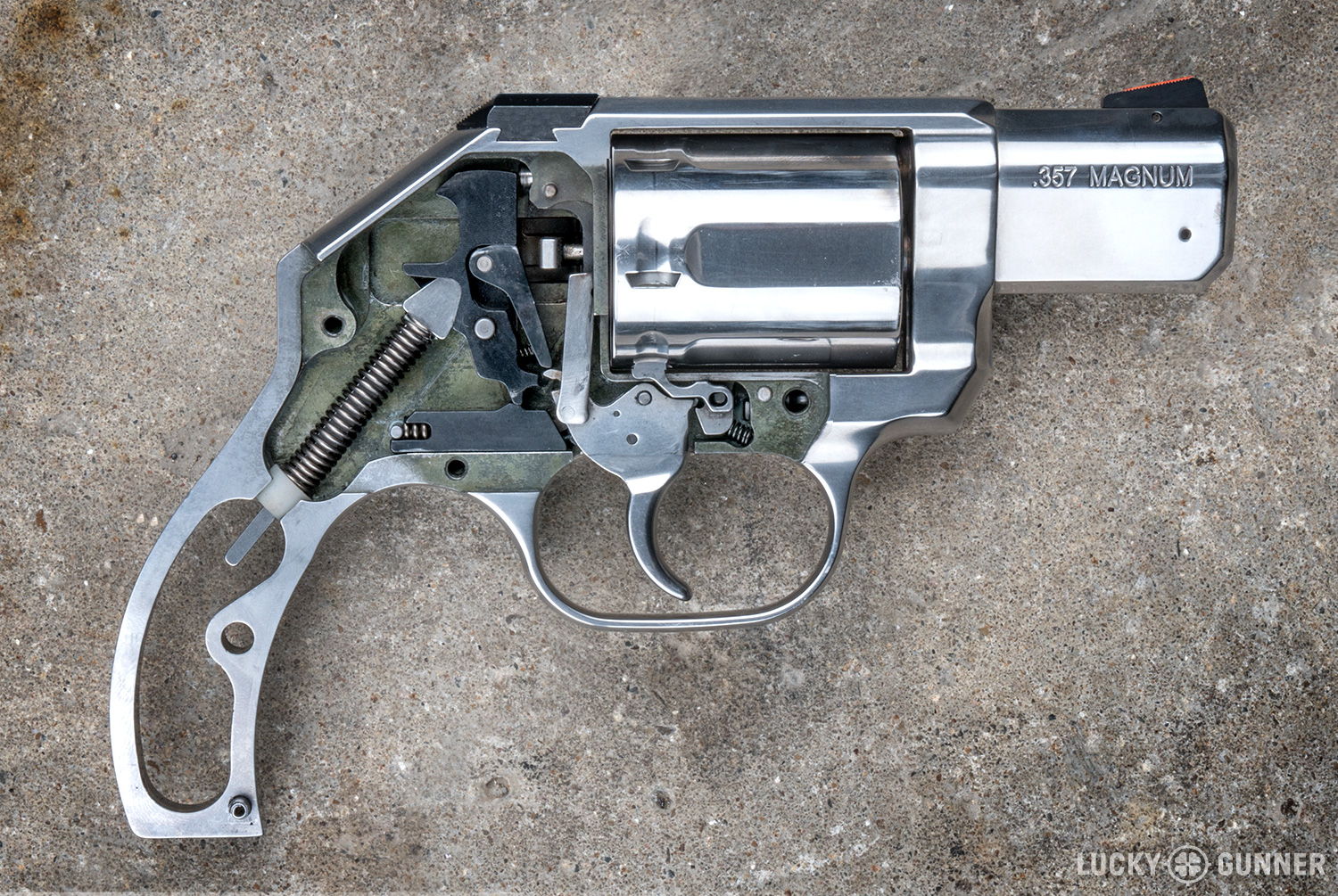
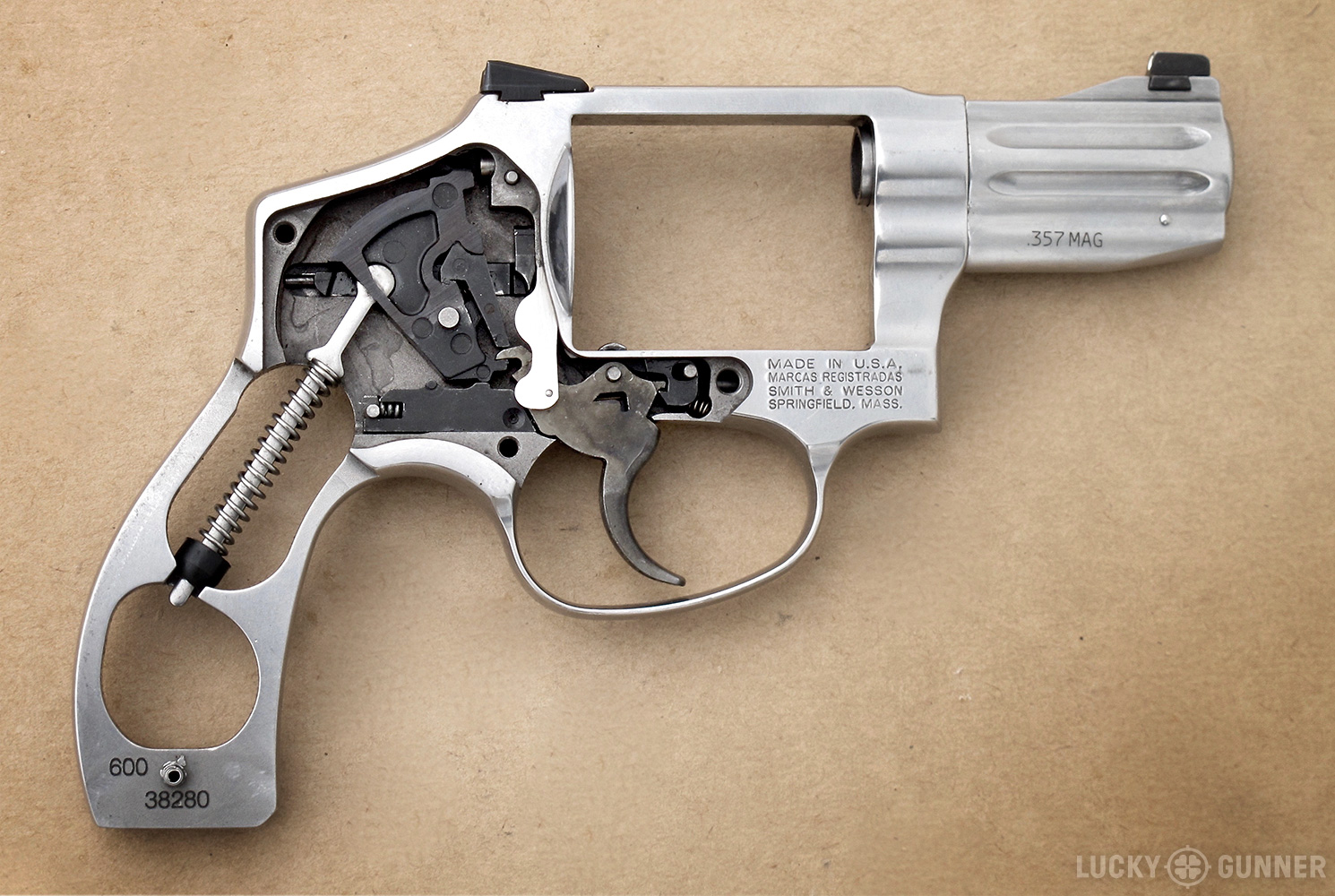
I’m not implying that it’s a bad thing that the K6s has borrowed so heavily from the J-frame. Improving an existing design to make it your own has a strong tradition in the firearms industry. If anything, I applaud Kimber for advancing the J-frame design into the 21st century. Here’s hoping S&W (and Ruger, for that matter) eventually answer with their own version of the small frame 6-shot small frame revolver.
Accuracy Testing
As I mentioned in the video, I conducted accuracy testing at 25 yards from a bench rest. I started the testing with the seven loads below, but will add more as I have a chance to shoot additional groups. I fired two groups of five rounds with each load and recorded velocity with a Labradar ballistic velocity radar (not technically a chronograph, but it serves the same function). The average group sizes and velocities are below:
| Load | avg group size | avg velocity |
|---|---|---|
| Federal Gold Medal Match 148 gr LWC | 3.1″ | 672 fps |
| Magtech .38 spl 158 gr +P SJHP | 3.45″ | 831 fps |
| Hornady Critical Defense .38 spl 110 gr FTX | 4.8″ | 889 fps |
| Remington Golden Saber .357 mag 125 gr | 4.85″ | 1105 fps |
| Hornady Critical Duty .357 mag 135 gr | 5.05″ | 1149 fps |
| Winchester .38 spl 158 gr +P SWCHP | 6.8″ | 778 fps |
| Speer Gold Dot .38 spl 135 gr +P (Short Barrel) | 8.6″ | 904 fps |
There’s nothing too surprising here except for the disappointing accuracy of the Speer Gold Dot. This is my go-to defensive load for .38 special revolvers, but I don’t believe I would be confident carrying it in the Kimber knowing that it’s not capable of 8-inch groups at 25 yards even under ideal conditions. Concerned that I may have gotten a bad lot of the Speer ammo, I shot a quick group with my 3-inch Smith & Wesson M66 and managed 3.5 inches. So it would appear that the ammo is fine, but the Kimber and Speer just don’t make a good combination. My “other favorite” .38 special load is Winchester PDX1, but I didn’t have any on hand when I went out to shoot these groups. As soon as I have the opportunity, I’ll test the Winchester load and add the results to the chart. Hopefully it will fare better than the Gold Dots.
Point of Aim
Another issue worth mentioning is the sight picture required in order to get the K6s to hit where you want the bullets to go. This is often an issue with revolvers because the point of impact can vary greatly from one .38 special or .357 magnum load to the next, and the factory sights are often not regulated for the ammo the end user prefers. For 25 yard accuracy testing, I typically use a sight picture with the top of the rear sight held so that it horizontally bisects the “X” in the 10-ring (not that I can actually see the “X” from 25 yards on the B-8 repair center targets I use, but that’s the idea). With the K6s, this resulted in every load I tested impacting well below the bullseye — anywhere from 5 to 12 inches low. When I adjusted my point of aim so the front sight completely covered the black center of the target, the point of impact shifted close to the center for most loads. This is not necessarily a huge downside for a small defensive revolver, but it does highlight one of the reasons many people prefer their revolver sights to be adjustable for both windage and elevation.
Keep an eye out for more on the Kimber K6s in the coming months. In the meantime, let us know in the comments if you’ve had any first-hand experience (good or bad) with Kimber’s new revolver.
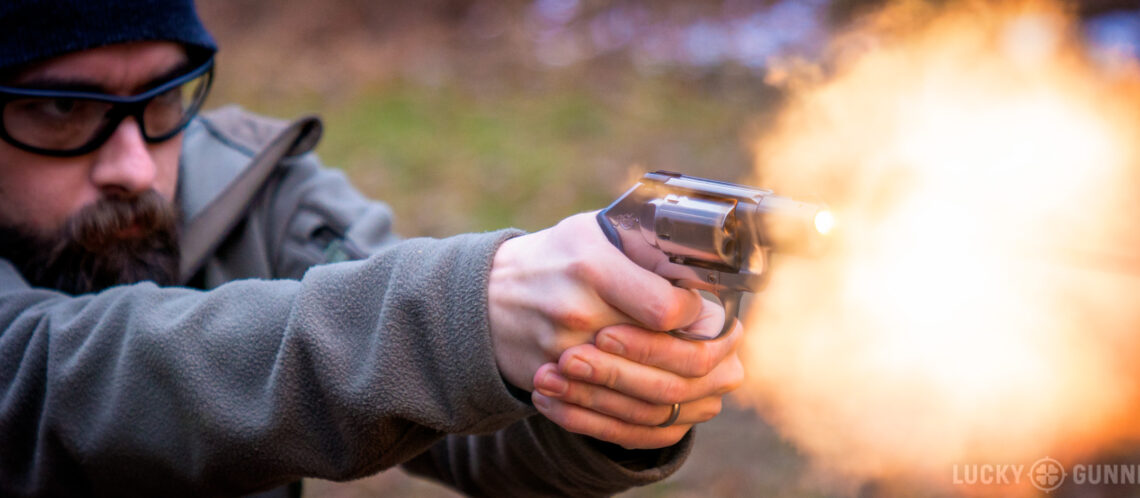

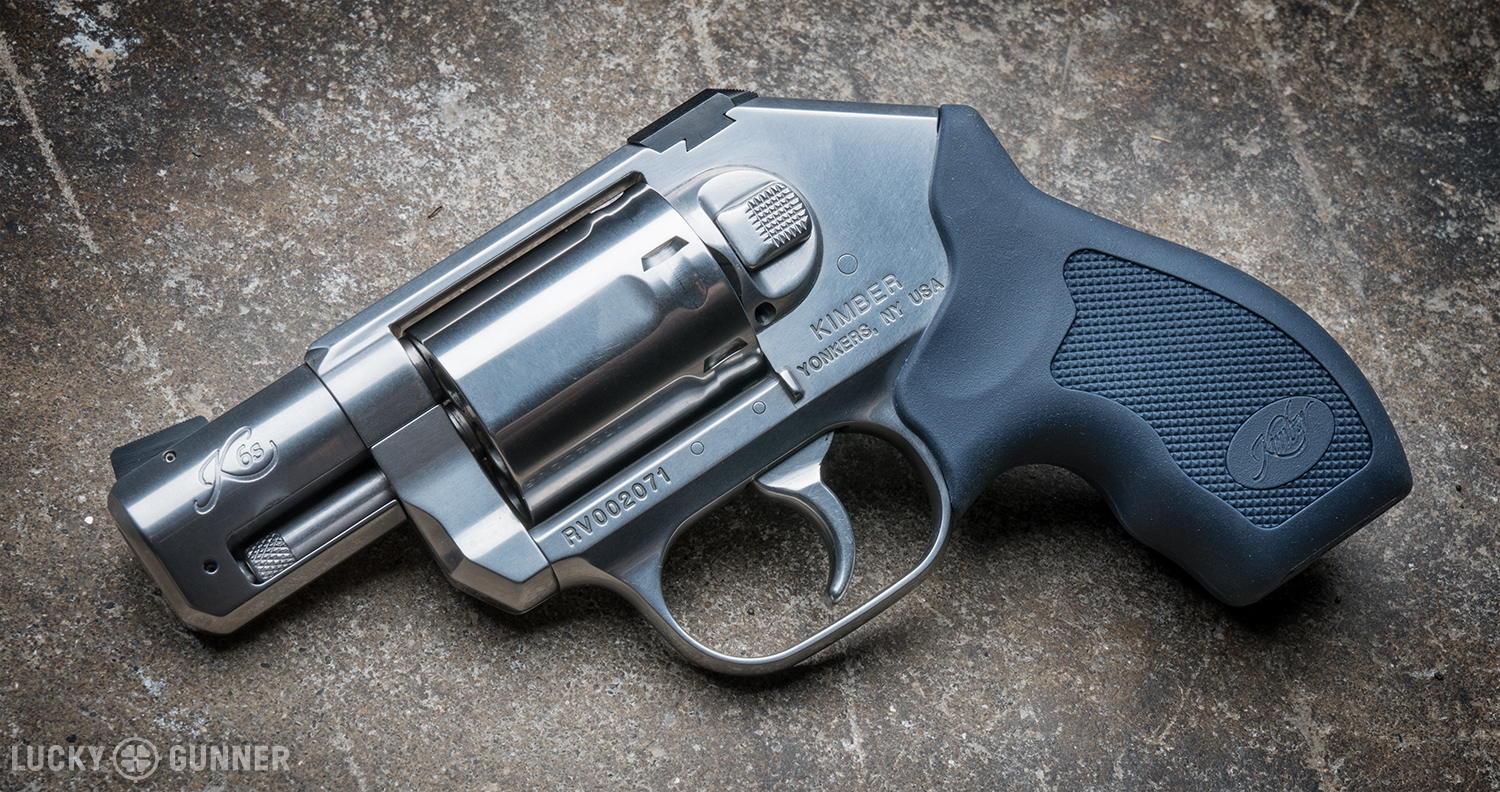
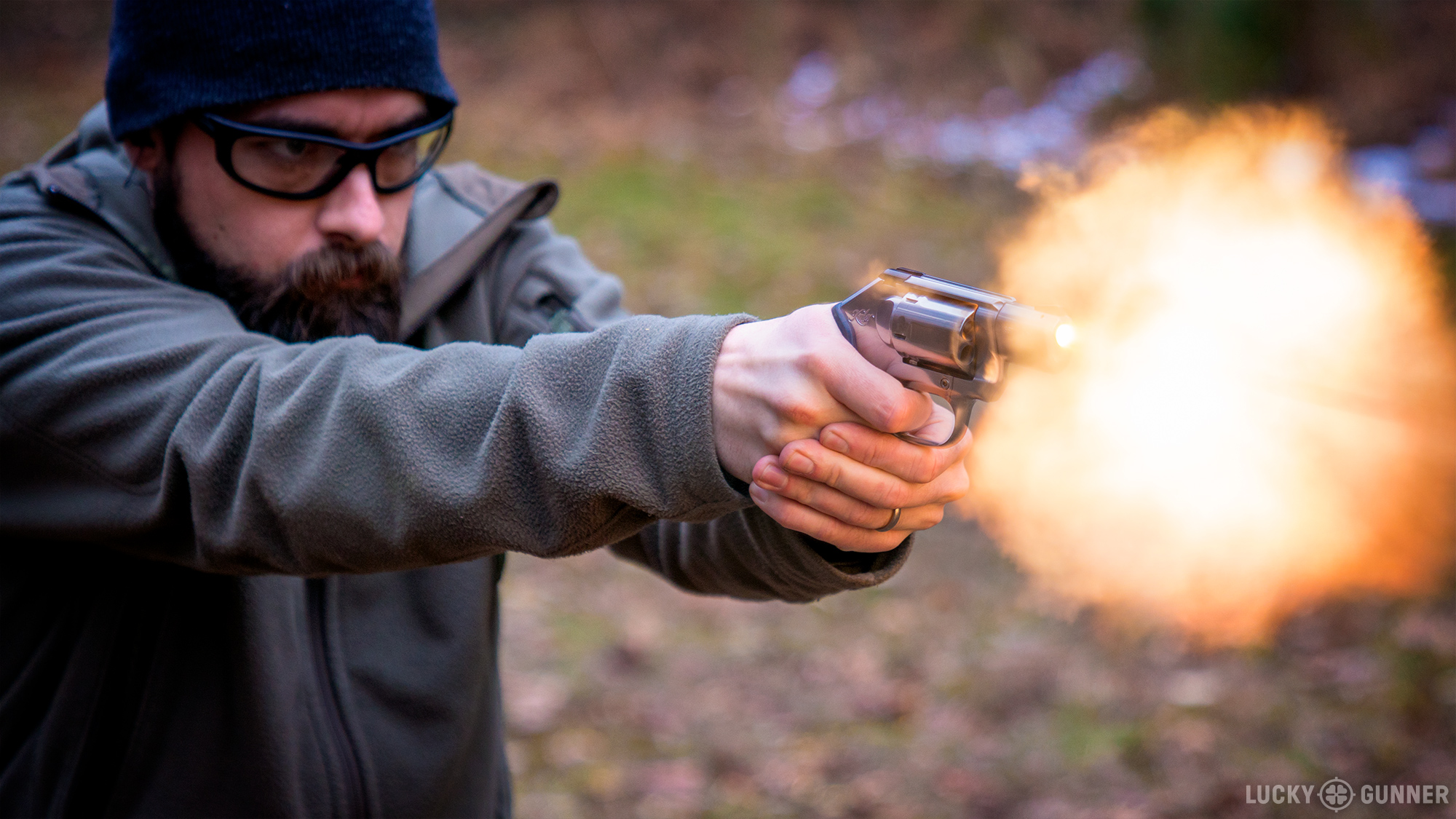
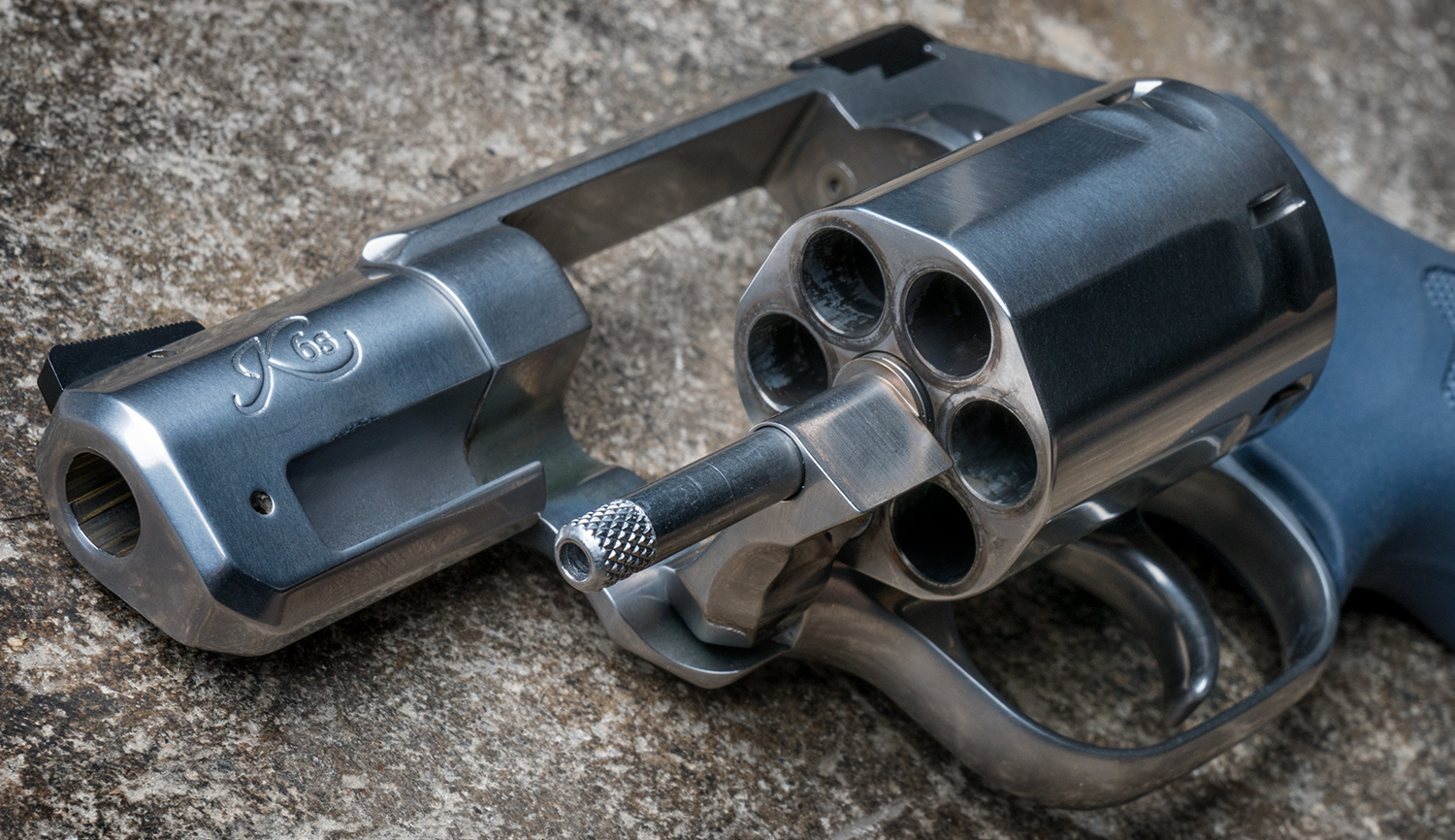
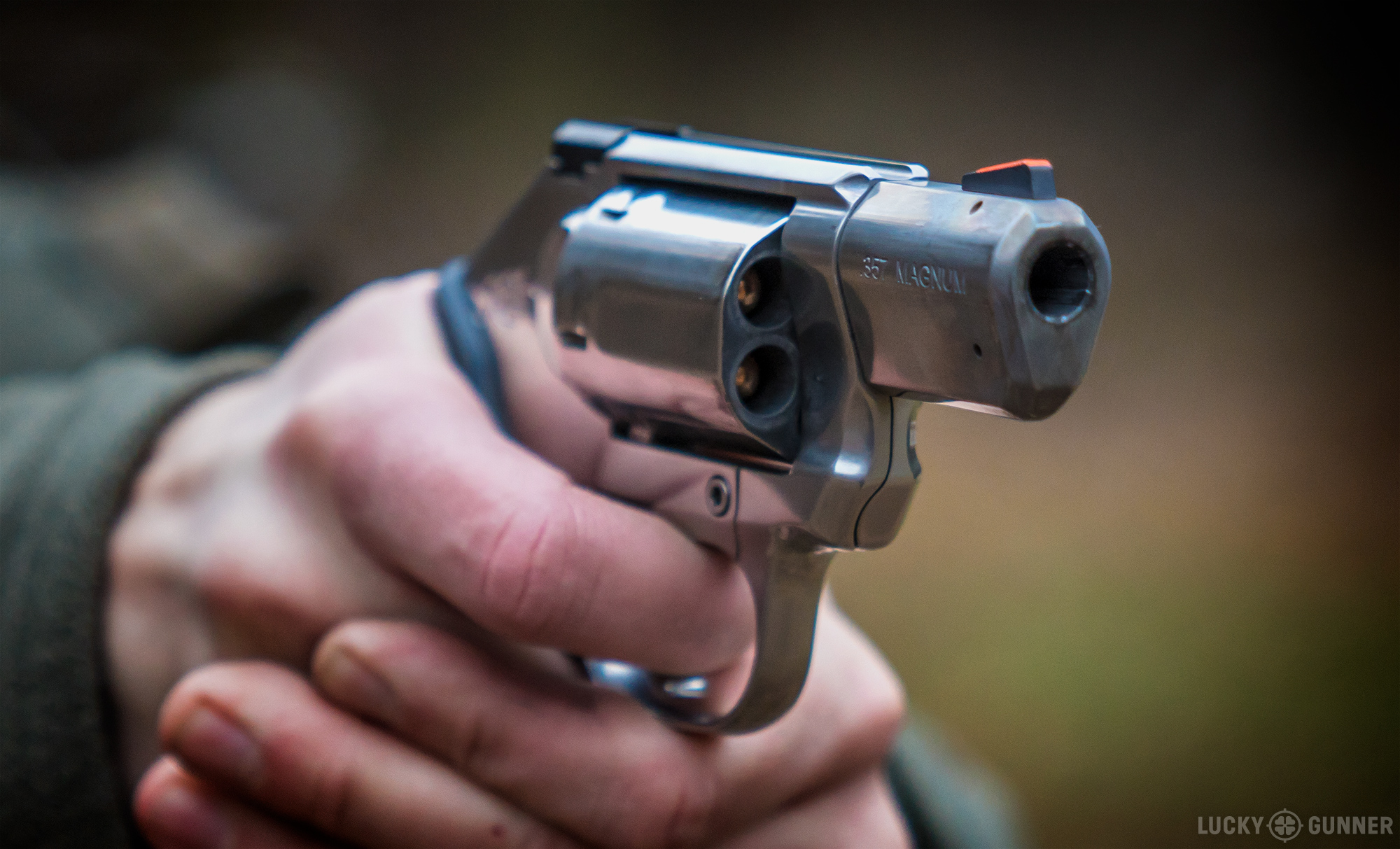
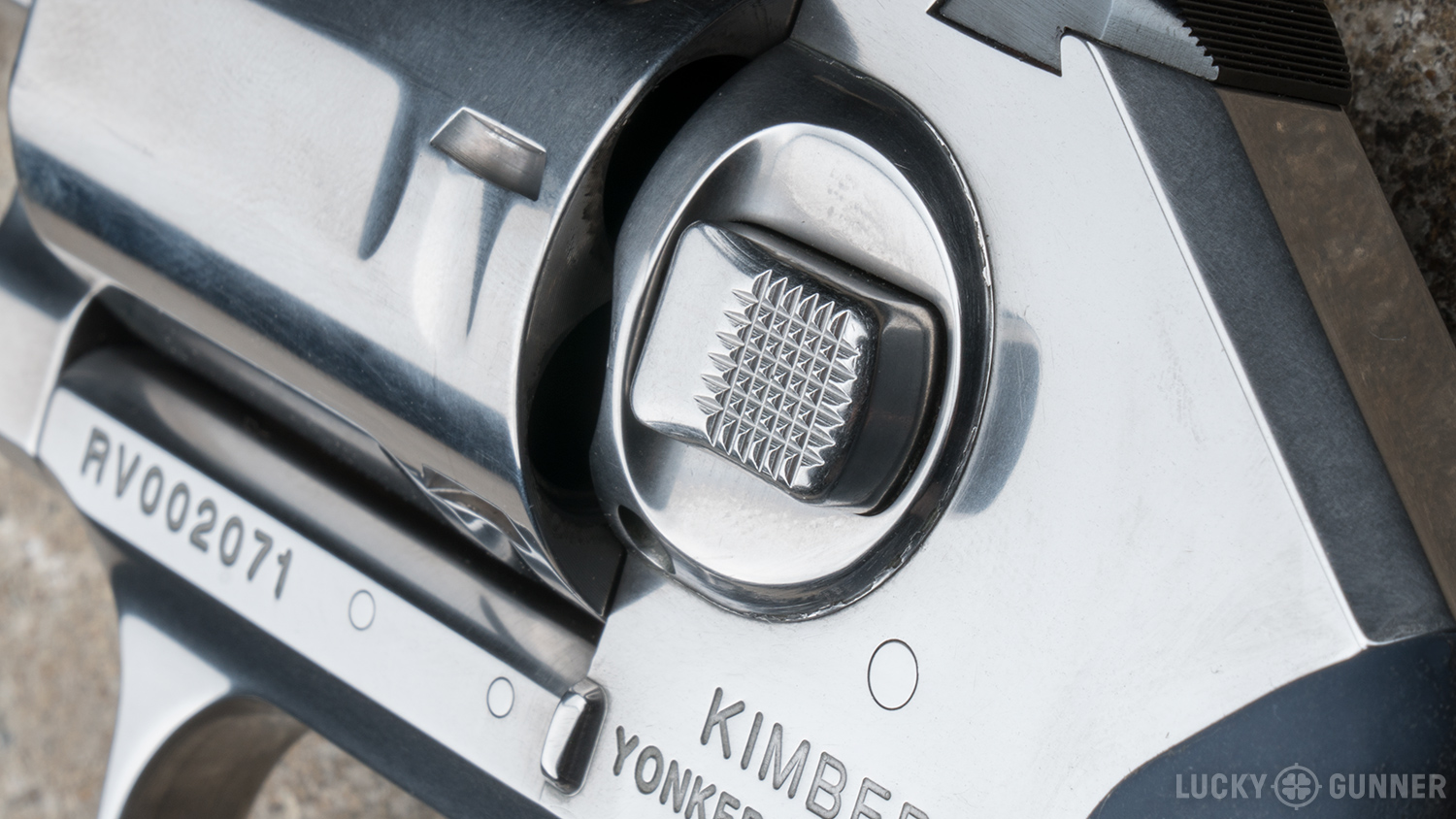
Outstanding video and article, many thanks, you are first I know of to answer all the questions especially about the mechanics and internals. Looking forward to your further evaluations and ongoing aftermarket support forthcoming like grips from Hogue’s, Pachmayer, and VZ. Exposed spur hammer and up to 3″ barrels would be welcomed by some operators. Perhaps limitation to .38 +P/+ or 9mm Parabellum chamberings might procure orders from conservative big city agencies like NYPD as well, and surely advanced departments like the States and the Feds will take an interest as is. Will be watching for your inspection of the Colt Cobra, which hopefully will evolve into .357 models ( the Magnum Carry). Best regards.
I like your videos a lot, so I gotta ask how you did the opening shot. I see the focus shifting, so that means it’s not a “zoom out” you faked in post, but an actual zoom. Those don’t look like crimped blank rounds, either. My guess is you used a long lens and are aiming just to the left of the camera. Remote zoom control, I hope?
JHP bullets loaded into empty and de-primed cases.
The shot is a post effect. Duh, that should have been obvious. Thanks!
Im a huge fan of the K6S having not got got the change to handle or shoot one yet. Id really like to see a 3″ exposed hammer model and down the road a larger 8 shot .357/6 shot .44 frame size. Assuming these turn out okay they could probably oust S&W as my preferred revolver as I really like the push button cylinder release and have no use for an internal lock.
Did you forget the Ruger LCR-357 and the basic priced Ruger SP-101? The price alone and Kimber’s QC are two reasons why I wouldn’t even consider this gun. I have the Ruger LCR-357 and life is good, and the trigger is one of the best out-of-the-box triggers I have ever owned…
I own, and often carry an LCR 357, so no, I didn’t forget about it. But like the standard SP101, it’s not directly comparable to the K6s in terms of features. A lightweight revolver like the LCR doesn’t really fill the same role as a steel frame snubby. And someone who is satisfied with the rudimentary sights on the vanilla SP101 likely would not be willing to pay a premium for features like the removable sights on the K6s, so it doesn’t make as much sense to compare them. Like you said, the LCR does have a very good trigger, but I think the action on the K6s is just slightly better.
Chris–thanks for the clarification, really enjoy your articles.
I was looking at the sights on the base model SP101 and the front sight are removable, the rear sight is just a grove that runs on top, but they do have models that the rear and front sights are removable for after market sights.
Yes, the Talo distributor exclusive Wiley Clapp version of the SP101 has Novak rear sights in a dovetail cut. I reviewed it a couple of years ago here: http://www.luckygunner.com/lounge/ruger-sp-101-the-shooters-snub-nose/
I’ll always be partial to my SP101 as it was my 1st ever gun almost 20 years ago, was carried with hot .357’s for cougar and feral dog protection whilst gold prospecting the mother lode, and actually stopped my head from getting bashed in during a two legged encounter near home a decade ago. I just can’t warm up to these Kimber revolvers, but your article is excellent none the less, as is your website, and I for one appreciate all the time and effort you put into it Chris. Thanks!
Thanks for the kind words, Chris. The SP101 is a great revolver. I can’t blame you for being reluctant to switch to something else after the Ruger has proven itself for you.
Just read your SP101 review, great article as well. Wish they had those target sights back when I got mine, nothing some smithing can’t add though ehh. I also got rid of the rubber grip on mine several years ago and put a bigger Hogue Pao Ferro all wood grip on it, fills my hand much better and looks very cool. Hope 2017 is a continuation of revolvers for you as well ….. For 2017 I’ve got my eye on the new Bisley frame BFR’s ….. kinda the not so rich mans Freedom Arms ??
SP101 w new trigger spring and Hogue grip much better gun. Though it may be cast v forged, the forcing cone on the Ruger looks better than the S&W, and the heft of the Ruger feels better with .357, especially w/ hot loads.
An SP101 with the 3″ barrel is on my “really want” list
Thanks for the usual great video, very high-end production values! One quibble, though; Colt lists the MSRP of the new Cobra as $699, not $799 as shown on the video. Regardless, I see the S&W 640 Pro as the direct competition to the K6S. They even weigh pretty much the same, coincidence?
Looks like you’re right. Not sure how I missed that. Thanks for pointing that out. That makes it $200 less than the K6s, which is a pretty significant difference.
Just going to stick with Ruger, absolutely NO reason not to. Have the GP100, LCR 357 & a couple of SP101s; just better guns.
Love my SP101 2″ .357 – I have total confidence in it. But I know that any snub will not take the constant pounding of heavy .357 loads. The huge difference between maximum hot 180 gr cast loads and 125 JHP is too much to ask it to do. Carefully clean w/ mild lead away patches, light lube, dry fire practice a lot and use .38’s sometimes, as I once burned out a Taurus 605 which, oddly, was by far the most accurate snub I ever had. I take care of the snub and it’ll take care of me.
If I had to compare it with Smith, it would be the 640 pro and the 66-8 2.75″. The 66 will simply have far superior accuracy and both of the Smiths will have more options for everything. The Kimber is the best as far as carry size goes, but the 66 beats it out really hard with that extra 3/4 inch.
The K6s is virtually the same size as a J-frame. The M66 2.75″ is 10 ounces heavier and significantly larger. No doubt it will perform better in every way than a small-framed gun, but the two aren’t intended to fill the same role.
I bought a K6s online at Cabela’s for $809. After dry firing a few times at home, the trigger seemed to be dragging a bit and I noticed the front edge of the sideplate was no longer flush with the frame. Sure enough, the front sideplate screw was loose, so I tightened it up. I then removed the stocks to check the other two screws. The top one was slightly loose and the bottom screw was… missing. I called Kimber customer service and my first call was dropped after 22 minutes on hold. I called again and finally reached someone after another 20 minutes on hold. He said they would send me the screw but wouldn’t give me a reference number for the incident, which may make following up difficult if the screw doesn’t arrive. Other than that, the revolver looks and seems to function fine, with a very smooth and short trigger pull, though live fire will have to wait until the screw shows up. I hope this will be the only problem as I like the way the revolver feels and handles.But echoing Chris’ comments above, that the thing even made it out the door in this potentially dangerous condition does not inspire confidence. I’ll report back as the situation develops.
Very nice report, by the way. Best one I’ve seen yet. I especially like the look inside. This site does great work.
Wow… a missing sideplate screw? That’s very disconcerting. Thanks for sharing your experience! Let us know how it shoots when you get the screw.
Is the K6s manufactured by Kimber or by Manurhin for Kimber?
Designed and manufactured by Kimber in the US.
Thx!
Has anyone besides me tried the Kimber K6s with Crimson Trace Laser Grips? If so what did you think?
Bought a K6S about a month ago. Fired one shot and the cylinder locked up. My gunsmith cleaned it and was able to fire 15 shots no problem. Then I fired one shot and the cylinder locked up again. Now the gun is back to Kimber. Who knows if I’ll ever see it again. May just stick to my S&W 60 Pro after this experience.
In the back of my mind this whole time was Chris’s warning about Kimber quality control. Buyer beware with these guns.
I prefer S&W’s for CC but I have custom-made carry guns. Basically a 3″ 7-round PC681 without the barrel porting and with a slightly deeper moon clip cut so they don’t bind the cylinder. My buddy has a LCR and loves it. I’ve shot it a few times and, while the recoil is surprisingly light for such a small .357, the accuracy was horrible. I carry a 3″ 65 when I want something a bit smaller and lighter but it’s still big and heavy. I have a S&W 442 and love it as a BUG or in summer for shorts/T-shirt carry, but it’s only 5 rounds of .38 special +P. It’s unbelievably accurate, especially for such a small barrel, and doesn’t kick that much at all, so I feel fairly confident with it. I don’t think I’d want an airweight .357. I’ve been considering a 640 as a compromise. Really the only thing stopping me is the capacity. I’m definitely going to give this Kimber a try. Seems like just what I was looking for.
My question is, since these are so new, I wonder how well they’ll hold up to .357 magnum shooting. One of the issues with the K frames is that repeated heavy magnum loads eventually compromises the forcing cone. These are even smaller than the K frames. Any idea of the metallurgy and engineering in those critical stress areas?
Hey there LG Chris, been doing research on different 357 because I’m in the market of wanting to buy one, but was wanting a 9mm revolver but seeing the one I want is not available my next option is a 357. Been looking at the Ruger SP101 and the Kimber K6a. I have physically held and looked over the SP101 but not the Kimber because where I live no one has any. After your video on the K6s I’m kind of skeptical of wanting to get the K6s seeing customer service isn’t that good and no aftermarket accessories for the gun. Plus the price, but seeing it is so concealable and sleek I might have to go to another city to look at one and get the feel for it. Keep up the good work!
At this point, I would suggest the SP101 or the S&W 640 Pro if you’re looking for a steel frame snub nose. I have not been encouraged by the issues many of our readers/viewers have reported with the K6s.
Relatively new to hand guns but my 2 cents on Kimber – I have the solo 9 that’s not functioning properly, I called the customers service department and they could not have been any more accommodating, as a matter of fact the rep. gave me his name as if he was a concierge and told me to contact him any time. I have read/heard too many complaints regarding their service and was apprehensive about purchasing the K6s until your review and my customer service experience I pulled the trigger! Must say, so far I love the gun and have had no problems. Maybe they’re changing their ways or maybe I just go lucky. For me 2-thumbs up.
PS thanks for your in-depth review, great information.
I sent my Ultra Raptor II in for sight replacement work and was dazzled by Kimber’s customer service. The turn around time was less than a week and everyone I spoke with was exceptionally accommodating. Yes, you pay more for a Kimber but, based upon the quality of the product and excellent support, it is very well worth every penny.
I just ordered a S&W Pro Series Model 60. It is the 3″ model as well as what Kimber has now (3″). I never saw or handled the S&W because no one had it. My concern now is if it has that 2 part barrel sleeve. Not a fan of it. None of my other S&W’s have it. Only issue with Kimber is lack of single action and their customer support. I can’t even get them on the phone to ask a question. Any thoughts? Thanks!
P.S. I’m trading my Ruger SP101 for the story revolver below. Never liked it. Don’t like the trigger or how the grip flexes when shooting .357 loads.
Put in new trigger spring and hogue grip, shoots much better. Trigger still is a tad gritty, but am going to do a full trigger job. Though it may be cast v forged metal, I still like the look of the forcing cone in the SP101 vs S&W and the heft of the Ruger when shooting .357. I would be worried w/ a S&W when shooting the hot Monarch 158 gr loads.
i had real good first day with the K6S, i am not all that good of a shot but i was with it just using range fiochhi ammo 7yrds. 25 yards was acceptable, in the rings of the target.
I purchased this gun and went straight to the range. The gun malfunctioned, the cylinder was locking up, and the trigger wouldn’t pull. I sent it back twice, and Kimber replaced all of the parts. When it came back the third time, the cylinder locked in the parking lot of the gun store while I was dry firing it. I called KimBer and they replaced it. The new gun shoots great, and I am happy with it. I was never told what caused he issue, but I assume it was a mis-milled frame. I applaud Kimber for the customer service, but wish the QC was better off the line.
It seems like the only advantage this has over my LCR .38 is the extra round. The LCR is so easy to carry (and shoot). That counts for a lot. And it costs about half of what this one does.
Bought a 3″ K6S a couple of months ago. Shoots beautifully, no problems whatsoever. However, I have small hands and shooting just 20-30 rounds of .357 leaves the area where the backstrap meets the web of my thumb aching for a week. .38 +P is a joy to shoot in comparison. Anxiously awaiting those Hogue Tamer grips.
I picked up a K6 earlier this month after handling them several times previously and being impressed with them. I wanted to give them sometime in case there were any major problems. I’m 680 rounds into my 1k round testing for “carry worthiness” test with no problems to report. So far I’ve found a whole lot to like about this revolver.
– Rounded and shaped everywhere for CCW comfiness.
– Best DA trigger my finger has yet to stroke from a factory gun.
– Fiber optic red front and black rear is my preference in sights but I can easily change them if I want.
– Recoil is mild with Specs and managable with Mags, (I plan on sticking with Spec +P).
– It is very “shootable” for me. I’m enthusiastically looking forward to working more with this revolver and starting to track speed & accuracy.
– It drops right into my S&W J Frame Nemesis holster and has one more cylinder.
– Efficiently sized, 6 rounds with just enough heft to be manageable.
– The design allows me to get a super high grip. Higher than any other revolver I’ve handled/owned.
– Price? Well, it isn’t cheap but I have spent this much on a revolver before.
After removing the sideplate and seeing that it is a S&W type action I went ahead and tuned the trigger rebound and spring. Polish rebound, contact areas on frame, spin and polish the rebound spring. The factory DA measured 9.5lbs and was amazingly sweet. It’s now an incredibly amazingly sweet at 7.75lbs with a strong trigger rebound.
So far I think the K6 is a true game changer in the small CCW revolver arena. Since I’ve had zero issues on my way to the 1k round testing mark I’m expecting it will sail through the rest of the way. I believe it’s very much worth taking a look at for anyone interested in a defensive revolver for CCW. Thanks Chris for another excellent and honest firearm review!
Thanks for the great review… very thorough. I have a 3″ K6s that I’ve only dry fired. So far, no issues. Truth be told, I trust my 3″ S&W Model 60 and 3″ 66’s to go bang every time. It bothers me that on the 3″ K6s, Kimber stayed with the shorter ejector rod. For what they’re charging, the longer barreled gun should have a longer ejector rod. Regardless, I’m sticking with .38 loads.